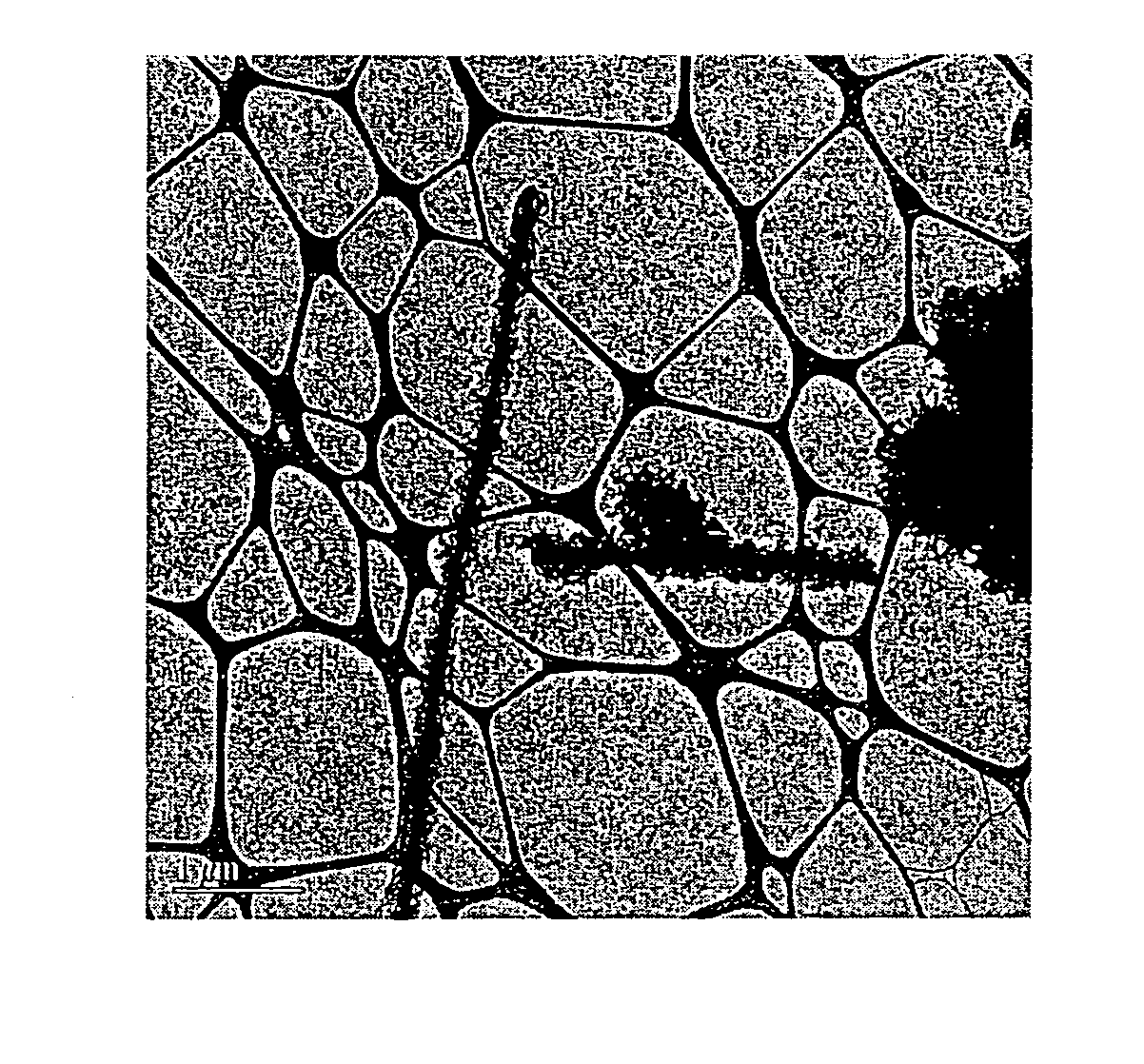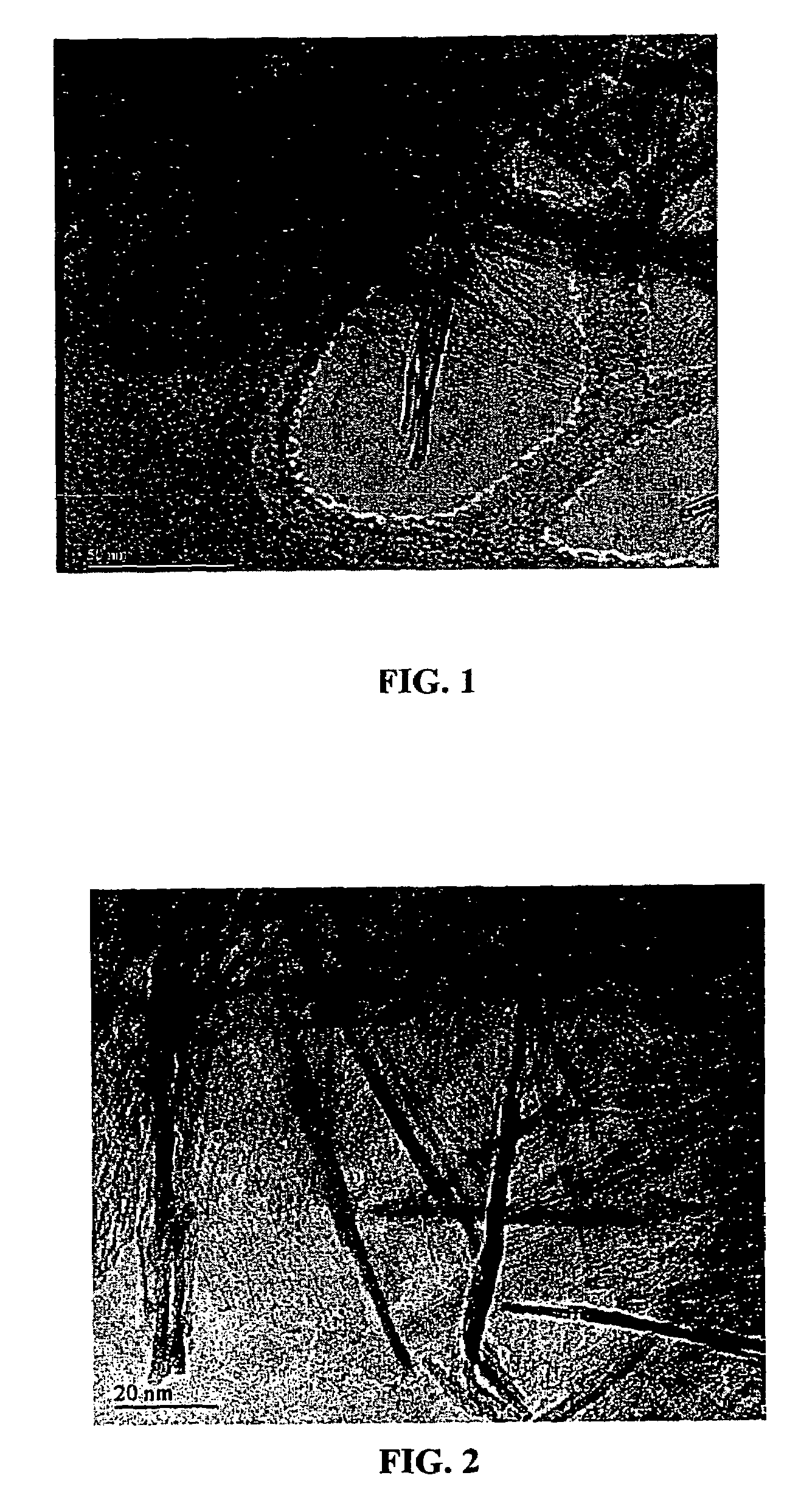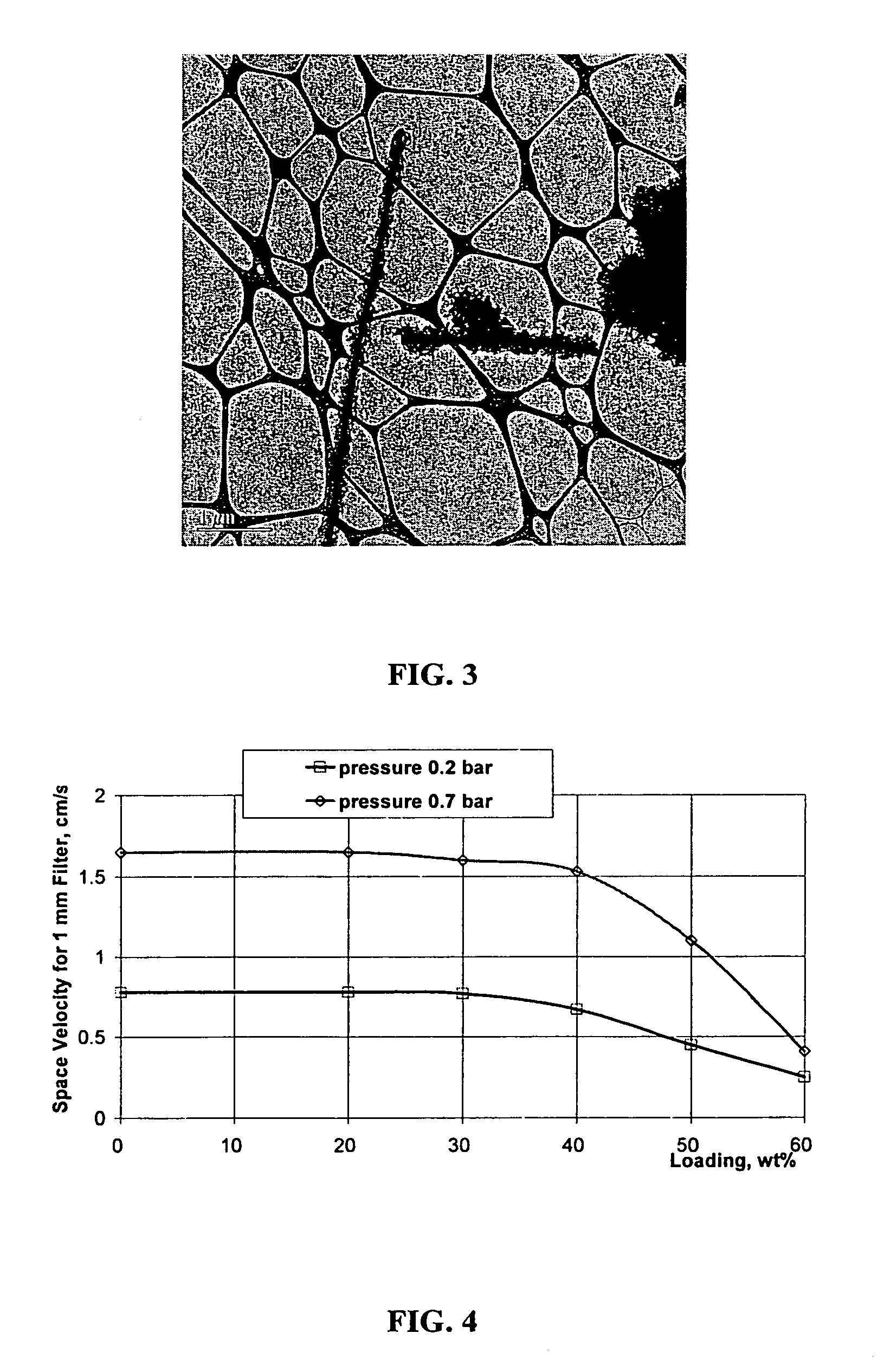Sub-micron filter
- Summary
- Abstract
- Description
- Claims
- Application Information
AI Technical Summary
Benefits of technology
Problems solved by technology
Method used
Image
Examples
example 1
[0056]Table 1 presents absorption data of viruses by loose nano alumina fibers (0.7 g), prepared as described above. The nano fibers were supported by a series pair of 25 mm conventional micro porous filters (Millipore HA, 0.45 micron porosity) and tested against controls using Millipore HA filters only. The two filters were used in series to minimize the likelihood of by-pass in the first filter, due to the loose nature of the fibers. The two viruses, MS-2 and φX174, bacteriophages about 30 nm in diameter and spherical in shape were used. They were detected as plaque-forming units (PFU) using a double-layer assay with Escherichia coli C-3000 as the host. The test was performed at pH 7.5, which is well known to be unfavorable for virus electroadsorption by membranes. The test was performed where the influent flowed through the filters under equal rates for both the control and the test filter.
[0057]
TABLE 1Adsorption of Viruses by Nano Alumina FibersFilterVirus% Virus AbsorbedControl...
example 2
[0060]Bacteriophage MS-2 was diluted in 150 mL of 0.02 M imidazole / 0.02 M glycine buffer (pH 7.2) to give an effective concentration of approx. 8×105 / ml. Nano alumina fibers (0.5 grams) were placed into a 15 mL conical centrifuge tube containing 10 mL of the bacteriophage solution. The powder was completely dispersed by vortex mixing and was shaken on a rocking table for 15 minutes. The mixture was centrifuged at low speed (2500 rpm) to collect the powder at the bottom of the tube and the supernatant was assayed for the presence of virus. An initial and final aliquot was taken from the buffer solution containing bacteriophage, verifying the virus concentration remained constant throughout the time of the experiment. Table 2 indicates that process treatment temperatures between 150° C. and 450° C. had no noticeable affect on the attachment of either virus. The data also indicate that nano alumina fiber is a highly efficient precipitating agent, removing virus from solutions to >3.9 l...
example 3
[0063]In order to avoid by-pass and channeling of fluids through packed beds of fibers, fibers are preferably integrated into a fibrous composite. Non-woven webs of fibers, 25 mm in diameter (surface area ˜5 cm2) were prepared by mulching a mixture of nano alumina with glass microfibers (Type B-06-F from Lauscha Fiber International, dimensions 0.6μ diameter, 2-3 mm long) in water. About 1.5-2 grams of microglass was mixed into 400 ml of distilled water and various quantities of nano alumina powder were added to produce different ratio's of microglass / nano alumina filters. The mixture was blended in a conventional blender at the highest setting. After preparation, the nano alumina / microglass composite was filtered by suction through a 5μ pore size filter to produce a thin fibrous mat of nano alumina and glass microfibers. The mat was separated from the coarse filter and air-dried at room temperature. One major advantage of nano alumina fibers as compared to spherical particles with e...
PUM
| Property | Measurement | Unit |
|---|---|---|
| Thickness | aaaaa | aaaaa |
| Diameter | aaaaa | aaaaa |
| Size | aaaaa | aaaaa |
Abstract
Description
Claims
Application Information
 Login to View More
Login to View More - R&D
- Intellectual Property
- Life Sciences
- Materials
- Tech Scout
- Unparalleled Data Quality
- Higher Quality Content
- 60% Fewer Hallucinations
Browse by: Latest US Patents, China's latest patents, Technical Efficacy Thesaurus, Application Domain, Technology Topic, Popular Technical Reports.
© 2025 PatSnap. All rights reserved.Legal|Privacy policy|Modern Slavery Act Transparency Statement|Sitemap|About US| Contact US: help@patsnap.com



